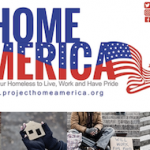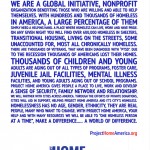He’s also looking at the effectiveness of the Homeless Action Network of Detroit as the lead agency for the Detroit CoC, the system of nonprofit homeless providers for Detroit, Hamtramck and Highland Park; the Coordinated Assessment Model, which is used by the continuum to refer each homeless person to an agency for assistance; and whether there is a long-term strategic plan to guide services and allocations.
As he completes the review, Jemison said he’s asked Meghan Takashima, homelessness solutions director for the city, to resign as chair of the CoC board in order to ensure an objective assessment. Takashima and another representative from her team will remain on the CoC board, however, filling two city seats provided for in the organization’s charter.
Jemison expects to wrap up his investigation in February and to provide Detroit Mayor Mike Duggan with his findings and any recommendations by March.
While acknowledging the work homeless providers are doing in Detroit, Jemison said he’s definitely seeing some issues as he learns more about the current system and process.
The city invests about $5 million each year to fund homeless outreach on Detroit’s streets and other programs such as permanent housing and prevention.
That’s a fraction of the roughly $25 million the CoC gets from the U.S. Department of Housing & Urban Development each year.
“We try to use our bully pulpit very selectively,” Jemison said. “The influence we have, we’ve been using … to make sure that things that are essential to the city don’t change,” as different homeless programs have seen cuts through the CoC process.
Between its seats on the CoC board, which makes funding recommendations to HUD, and just making the city’s voice heard, “I feel confident we can get change that we think is appropriate,” Jemison said.
Provider concerns
The city’s review follows Detroit Rescue Mission Ministries CEO Chad Audi’s public call for an investigation in late November. Among his concerns are what he sees as a lack of transparency in how the funding is allocated and the apparent lack of a long-term strategy to guide services and funding allocation. He also believes only select providers are named to the CoC board and sees issues with the CAM’s performance and a perpetual administration contract for it that hasn’t been rebid since it was put in place four years ago.
“We need either HUD or the city to get involved in CoC allocations, to oversee the transparency of the process,” Audi said. “We still believe that they’re fixing their papers to look good but the process is not fair. People who’ve gotten on the (CoC) board have gotten more money, and I can prove this.”
Jemison said he has heard from other homeless service providers about their concerns, as well.
Roslyn Baughman, CEO of Travelers Aid Society of Detroit, shares Audi’s concerns and believes there’s a conflict in the way CAM operates.
Its lead administrator, Southwest Solutions, is responsible for assessing each homeless person who seeks shelter or assistance and then referring them to a specific provider for assistance.
Baughman said referrals to Travelers are always people with no income at all who are difficult to get into and keep in permanent housing. The success ratio Travelers and other providers have in getting the people referred to them into permanent housing then affects their score for future CoC funding.
Both Detroit Rescue Mission and Travelers have lost CoC funding for transitional housing programs in recent years, and both are under pressure financially, having operated at a financial loss for the past couple of years.
“The CoC, from my point of view, is corrupt to the core,” Baughman said. “The very people who are judging our grants for renewals are the very same people who are receiving the funds I’m applying for.”
Even though there is a recusal process in place during funding conversations and votes, she fears friends vote for friends on the board. “I feel if you are going to be voting on who gets the money, you should not have a dog in that race, (and) your best friend should not have a dog in that race,” she said.
She also questions the model of each CoC agency being required to make annual payments to HAND — a total of $18,000 annually for Travelers — when the administrative agency is applying for and getting its own grants.
“I just want a fair shot. Keep it fair and above board and transparent,” Baughman said.
The Homeless Action Network, which administers the grant submission process for the Detroit CoC and the collection of local homeless data for inclusion in a federally required Homeless Management Information System, believes it’s operating within the terms of its charter, which establishes the process for nominating providers to CoC board seats, said Executive Director Tasha Gray.
A link to the charter it adopted in 2015 is posted on its website. There is also information posted related to a permanent supportive housing plan finalized in 2016.
Gray said there is a point system used in ranking projects applying for funding.
The CAM governance committee of the CoC board is also looking at establishing a review process for CAM and its lead agency administrator, she said.
Shift in strategy
Underlying the tension between some homeless service providers and the CoC board that makes the recommendations for local allocations to HUD is the shift to the housing first strategy HUD views as a best practice.
The approach puts the primary focus on getting people into permanent housing and helping them maintain it and does not put stipulations on that housing such as mandatory sobriety, Gray said.
The Detroit CoC has adopted the approach, which has led to the defunding of programs providing services rather than housing to the homeless and cuts in funding for many transitional housing programs that help people get independent or give them a place to go as they await a permanent housing placement.
Housing first has been a HUD push for over 20 years, Gray said.
“What you will find with HUD is sometimes they are very soft with their implementation,” saying it’s a best practice, Gray said. “It’s not until years later they’ll put the hammer down.”
The city sees permanent supportive housing as a proven approach, as well.
Takashima credits the approach and a strategy of focusing on getting the chronically homeless off the streets with the 20-percent drop the city has seen since 2015 in the annual point-in-time counts of the homeless on a designated day each January in Detroit, Highland Park and Hamtramck. Last year during the one-day count, there were 2,078 homeless people in those areas compared to 2,597 in 2015.
Between 2015 and 2017, 514 units of transitional housing were cut, Takashima said. During that same time, 444 total permanent housing units came online.
Other changes underway
As the city’s review continues, changes are already being made to address issues and gaps in the system to get the homeless into permanent housing in Detroit, Highland Park and Hamtramck.
Last week, HAND announced a shift in the Coordinated Assessment Model‘s intake operations, from a call center that proved hard to reach to an in-person model of initial assessment that will require homeless people in the three cities to get to one of five Detroit locations for housing assistance. The in-person assessment is expected to be a more personal way to engage the homeless and hopefully, get them on a path to permanent housing rather than just into a shelter for a night, Gray said.
To fill the after-hours gap in assistance for homeless people who live on the streets, the city asked the nonprofits it contracts to do outreach with that population to begin working the late shift from 4 p.m.-midnight, seven nights a week.
Revenue opportunities
A cohesive, unified approach to ending homelessness in Detroit could attract new dollars to support that work.
A pay-for-success model that Jemison helped put in place in Massachusetts has proven successful in helping get people into permanent housing, he said.
It’s based on the idea that homeless individuals generate costs in areas such as state-funded healthcare. The program combined housing vouchers from HUD with private investment aimed at getting about 400 people into permanent housing.
“It would be great to do a project like that in Detroit,” Jemison said, noting he’s talked with the state about the approach. “But I don’t feel like we have strong enough systems” in place to build on, he said.
“We have to strengthen what we’ve got now so that we can be in a position to do things like that with the state of Michigan.”







